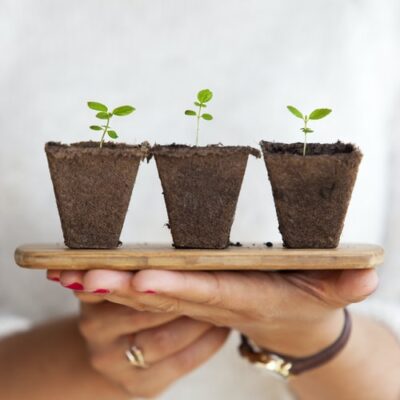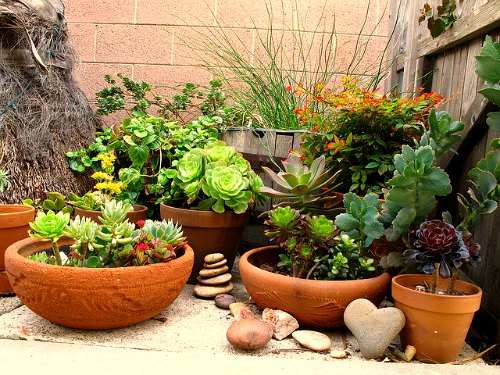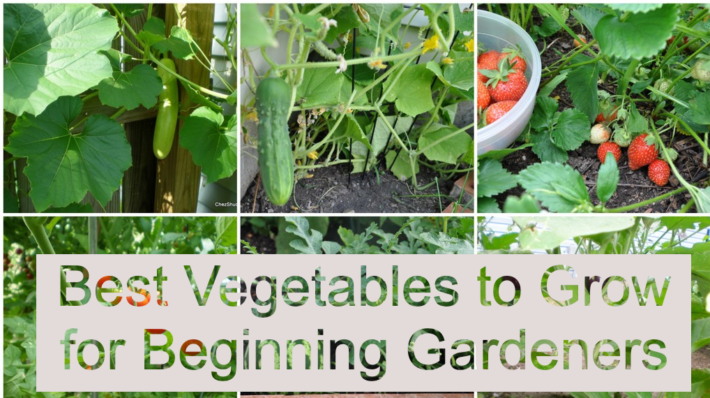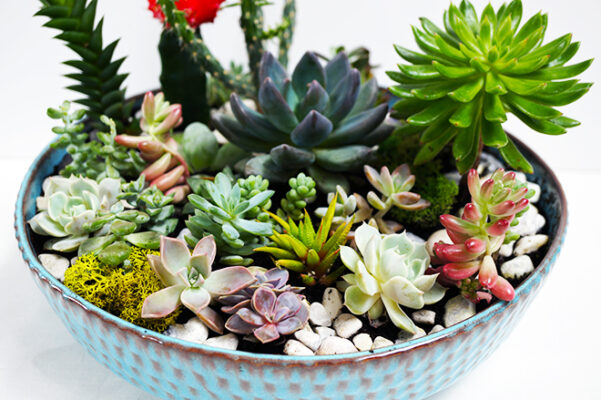Gardening is one of such hobbies that can entertain you a lot and also keeps you busy in your leisure. When you find the plants are yielding, you will feel utter joy. Now, when it comes to gardening, people have the idea that it can be done only if you have big yards or enough space in your house. But, people living with smaller yards, or in apartments in town areas can also do gardening with proper ideas and strategies. Home container gardening is one of such ideas that can fulfill your desire of having a garden in your house. In the last few years, the idea of container gardening is getting highly popular. If you are interested in container gardening, here are some detailed ideas that will help you to proceed.
Why Container Gardening?
In the last few years, people have fallen more for gardening. Growing fresh vegetables at home has become quite popular among the gardeners and that’s why they are taking interest in treating the soil, buying seeds, using fertilizers, and other details to make their garden look wonderful.
There are several reasons why people start gardening in containers. First of all, gardening is not for all. Maybe, many of you take an initial interest, but as the process is tiresome and long-going, you may lose your interest. Therefore, many people don’t want to go for a long-time commitment. Besides that, there is the problem of lack of space, especially for those who live in apartments and smaller houses with no space around. For those, growing plants in a container are the best idea to enjoy gardening and the yields after a long time.
Basics of Container Gardening
Now, when you are ready to do container gardening, you need to follow certain tips that can bring success to your process. Container gardening doesn’t mean filling your house with more and more pots, but to arrange those in a way so that you can get the best yield and also those make your house look adorable. Here are some of the useful tips you need to follow while going for container gardening.
1. Concentrate on the Drainage System

This is one of the most important points you need to follow while gardening in containers. Make sure the container has big holes so that the soil won’t get too wet and rot the roots of the plants. Usually, the pots available for container gardening don’t have larger holes. So, you can drill or punch those for bigger holes.
2. There Shall be Light

You must have ideas about which plant wants how much light. Some plants require direct sunlight while some of the others can survive in less sunlight and prefers to be in shadow. So, knowing the characteristics of your plant, place the container wisely.
3. Feed the Plants

Usually, potting soil doesn’t come with any nutrients for the plants, so you have to add those from outside. Almost every kind of plant requires additional Fertilizers to thrive. Use Fertilizers like seaweed blend, fish emulsion, etc. Such Fertilizers may smell awful but will provide enough nutrients to the potting soil for the benefits of the plants.
4. Know What to Buy

You don’t want your house to turn into a mini forest. So, before visiting the nursery, you should plan what kinds of plants you want to have in your garden. You can go to a flower garden, or it can be a vegetable garden of your choice.
5. Plan Well While Planting
You need to plan well so that all your plants thrive well. Make sure you keep the plants together that require more sunlight. Never put more plants in one post as it may damage the growth of both the plants. Also, put the plants separately that require more water from those that want dry soil.
6. Read the Plant Tag Thoroughly

While buying any plant from the nursery, you should check the plant tag thoroughly. You will get information about the plant like how much light, food, and water it requires, how big it will be, whether your plant is annual or perennial, and so on.
7. Plants Will Die
You need to accept the fact. Often, the most expert gardeners cannot save all the plants in their garden. So, you need to know when to give up on the plants. Thus, you can save the other plants in your mixed container gardening.
8. Acclimate the Plants
There are many plants which don’t prefer sudden changes in climate, suitable for their growth. So, you can fulfill the needs initially and then try to harden those so that they can survive in the changing climate.
9. Use More Potting Soil

Use more soil to the containers so that your plants get nutrients from the soil more to sustain. Besides, putting more soil is good for water retention. Once you water the plant, it won’t require regular watering if the soil is wet.
10. Put Your Time and Effort
Finally, you need to know the fact that container gardening is not too simple yet not too much complicated. You have to be ready to put much time and effort into your plants to make them thrive. Some will die in this process, but many will leave and when you are interested in your container gardening, you won’t get disappointed ever.
Match up your hobby of gardening with your lifestyle. If you are reluctant to water, go for drought-resistant and succulents. Also, you can choose designer pots if you want to enhance the look of your garden.
Tips for Container Gardening
If you love container gardening but quite a novice in this, you need to follow certain tips that will help you to grow plants in containers. You can have a lovely floral garden or grow some fresh vegetables and fruits for use at the households.
1. Tips to Pick the Right Container for Container Gardening

Garden containers are made of different materials. Non-porous materials like Fiber stone, fiberglass, resin, etc. are perfect for planting in hot summer weather. Go for bigger pots as those can hold a bigger amount of soil which is better for container gardening. You won’t need to water frequently. If you need to move the pot regularly as per sun exposure, lightweight pots of polystyrene or fabric planter bags are perfect. Make sure there is enough big hole at the bottom of the container as there has to be better drainage. You can turn any kind of household items into gardening pots, but make sure there is no lead-based color on it as that will contaminate the soil. Go for decorative containers to make your garden look adorable.
2. Pick the Best Plants for Your Garden

You need to pick plants that can follow the growing condition of your garden. If you have enough sunshine, buy plants that can tolerate it. For Traveler or those who often forget to water their plants, succulents are the best options. Also, you should be careful about picking plants that can thrive well in pots and also yield well.
3. Tips to Choose the Perfect Garden Container Mix

Next comes the tips on choosing the perfect garden container mix. The first thing you need to remember here is to buy the best quality container mix that is full of nutrients for the growth of your plants. You can also go for DIY methods to prepare the perfect container mix. To increase the nutrients in the potting soil, mix it with finished compost. Take both materials at 50-50 portion to have a perfect mix. If you are planting succulent or cactus, skip compost and add builders sand in the container. You can also prefer potting soil with organic nutrient sources. This will help you to avoid synthetic fertilizers.
4. Design the Container for Planting

Once you are done with choosing potting soil, the next step is to design container plantings. You can use all your creativity in designing the pot or container for the plants. If you want to make it look classy, yet simple, go for simpler designs with shapes, forms, and colors. Experiment as you wish with the designs, but make sure you can maintain the balance in your garden. Also, you should be cautious while planting the container garden. Make sure you can mix and match the plants in one large pot and it won’t look clumsy.
5. How to Take Care of the Plants in Pot

If you wish to change the container for a plant, check the roots carefully after pulling it. Remove the rotten roots so that the plant can grow its new roots freely in a new container. Use as much potting soil as required. You need to put the right amount of the soil for the better growth of the plant. Also, you should plant the plants at the same depth as those were in the nursery pots. Don’t plant those too deep or leave them sticking too high as that can rot the roots and dry out faster.
6. Tips on Watering the Plants

When planting is done, the next step is all about water. First of all, you need to make sure whether you are reluctant or have time-shortage to water the plants or not. If so, you can go for cacti and succulents. Else, you need to water your plant every day. While watering, make sure water should be 20% on the top, and also the pot drains out it well. Try to water the plants in the morning as it can remove fungal diseases and slugs, and also reduce water loss due to evaporation.
7. Tips on Feeding the Plants

How to feed the container plants? Yes, you have already used the mixture of potting soil and compost, but for better growth of the plants, you can use supplemental fertilizers. If you are growing vegetable plants, you need to use more nutrients as those can cause better yielding.
8. Additional Tips to Follow
For maintaining a container gardening, you should trim the dead leaves and flowers. Usually, in summer, you should go for maintenance every week. Also, keep the harmful pests and pets away from your container gardening. In the cold countries, make sure to empty the entire pot and overwinter those in dry locations if the pots are not completely frost-free.
Best Vegetables to Grow for Beginning Gardeners
Vegetables are one of the best things you can grow in your container gardening. Growing vegetables in containers mean you don’t need to have enough space. Certain easy-growing vegetables can grow in pots quite well. Here are some of the best vegetables you can get from your vegetable gardening. Have a look.

1. Tomatoes
You can grow tomatoes easily in a pot or container. You need a big container for growing tomatoes and also need staking so that the plant doesn’t droop due to the weight of the fruit. While buying tomato seedlings, make sure you buy short and stocky plants that don’t have blossoms so far. While planting the seeds, plant those deeply than any other usual seeds.
2. Potatoes
It feels great when you pick fresh potatoes from your container garden and those also taste better than the ones you bring from the market. If you are growing potatoes in a container, you have to use lots of water and soil for better growth. You also need to be extra careful to keep the containers fungus-free.
3. Peas
This is another interesting vegetable that you can grow in containers. Peas can fill the soil with nitrogen which is good for the growth of other vegetables. You can plant peas in early spring and when it produces fully, you can pull those out and plant any other vegetable in the same container.
4. Squash
You will feel happier to see the beautiful yellow blossoms of squash and feel the happiest to find the rich and filling squashes. They are easy to grow, but they require rich soil, enough light, constant watering, and feeding. There are squashes of giant sizes. If you want to grow squash in a container, make sure you don’t buy that variety.
5. Hot and Sweet Peppers
When you grow the red, orange, and purple peppers in one container, it looks colorful. You can grow them in grow boxes, but large containers are better as the plants can get enough light, watering, and good drainage. Make sure you water carefully as you don’t want the plants to get dry or too wet.
6. Lettuce and Salad Greens
If you are looking for vegetables that grow quickly in pots, go for lettuce and salad greens. Once you grow these veggies in containers, you can keep pests and animals away from those. As these greens don’t require much sunlight, you can put those in your shady balcony or at the places where those won’t get much sunlight.
7. Cucumbers
Cucumbers are also one of those fast-growing vegetables in a container. You can plant those in a plastic or ceramic container where you can water those well. For the vine cucumbers, you need a tomato cage or trellis.
8. Arugula
The leaves are spicy while the arugula flowers are sweet. In a medium-sized container, you can easily grow arugula and whenever needed, you can move the container. As the plant needs sunlight but not the scorching sun, you can move the container to the shady area after keeping it 6 hours in sunlight.
9. Radishes
Radishes are vegetables that can grow within a month. A container that is 4 to 6 inches deep is perfect for radishes. Don’t keep the plants under direct sun and water those frequently to cool those down. There are varieties of radishes are available. Choose anyone and plant it at your container garden.
10. Eggplan
To finish the list of the best vegetables to grow in containers, eggplants are the best. Go for large containers as the roots are bushy and go deep down the soil. There are lots of varieties are available for eggplants. Choose the small and the delicate ones instead of the heavy ones for your container gardening.
10 Unique Content Gardening Ideas
1. Use Broken Chair

If you have a chair that has lost its legs, you can use it as a container for growing plants. The seating area can be the planter box and you can mount it on wall or fence.
2. Birdcage Planter for Succulent

You can use a birdcage for succulent and cacti as those don’t require much water. Also, such a container can give your garden an antique look.
3. Dish Planters

This is one of the easiest plans for beginners. Use and empty glass bottles as planter and plants can grow well there.
4. Old Kettle Flower Pot

This is another simple yet beautiful idea. If you are not using the old kettle, fill it with potting soil and plant flower seeds in it. it will look like a vase while the flowers bloom.
5. Metal Buckets

Old metal buckets can be turned into nice containers for your container gardening. These are deep and good for those plants that are required to be inserted deep into the soil.
6. Floating Pond Planter

If you have a small pond in the backyard of your house, you can follow the idea. Buy readymade pond planters and it will look awesome.
7. Outdoor Plant Table

If your study table has got old and not anymore suitable for the purpose, reuse it as a planter for container gardening. Put potted plants on the table and it will look great.
8. Concrete Bird Bath

You can also turn the birdbath into a container for gardening. If you plant flower plants on it, that will attract bees and butterflies.
9. Simple Clay Pot

Many households use this most common method of container gardening. Whether you put these clay pots in your balcony or at the roof, it will look perfect.
10. Boot Planter

If you didn’t find anything else, this is quite a good and funny option for planting little plants. Don’t throw your old leather boots as you can use it as the planting ground for succulent.
Tools You Need for Container Gardening
If you are serious about container gardening, you will need certain tools that will make your job easy. If you are new to this, take a trip with us to know about the essential tools you will require for container gardening.

1. Hand Trowel
This looks like the garden spade, but much smaller. For mixing soil, transplanting seedlings, digging out a sole, leveling the soil, and also dividing the tubers, hand trowel is used. You can also scoop out compost from the bag with it.
2. Pruner
To cut off small branches and woody stems, this device is used. It is also known as bypass pruner or garden shears. This device can also be used for harvesting eggplants, tomatoes, bell peppers, etc.
3. Hand Cultivator
This is the miniature version of a garden rake. There is a handrail at the end while the front portion comes with two to three prongs. To mix fertilizers with the soil and remove weed, this apparatus is used.
4. Gardening Gloves
To keep your hands safe from soil, fertilizers, and other things, these are very important. You can buy more than a pair so that you always have a spare when one is in the washer.
5. Kneeling Pad
While maintaining container gardening, you need to kneel in front of the containers to maintain the plants. The posture is not good for your knees and back. So, buying a kneeling pad is worthy to keep your knees comfortable while you can sit on it also.
6. Watering Can
A watering can is handy enough to water your plants whenever required. If you have a hosepipe nearby, that is good; else watering can is perfect for the container garden.
7. Soil Scoop
For taking out compost, fertilizers, etc. from the bag and to shovel soil, this tool is used. You can buy large scoops with high sidewalls.
8. Plant Supports
To grow tomatoes, vine cucumbers, eggplants, peppers, etc. plant support is required. This looks like a cage and supports the plants from drooping.
9. Micro-tip Scissors
These are small scissors with pointed blades. To thin down the leaves, weeds, etc. this is used. It can be used for pruning tomato suckers too. You can work with it with more precision than pruner.
10. Plant Labels
If you have different types of plants and get confused which is which, you can implant plant labels to the container to recognize those.
Final Word
So, here you get a detailed account of container gardening. Hopefully, the discussion will help the beginners as well an answer lots of questions of the ones who want to know more about container gardening.


